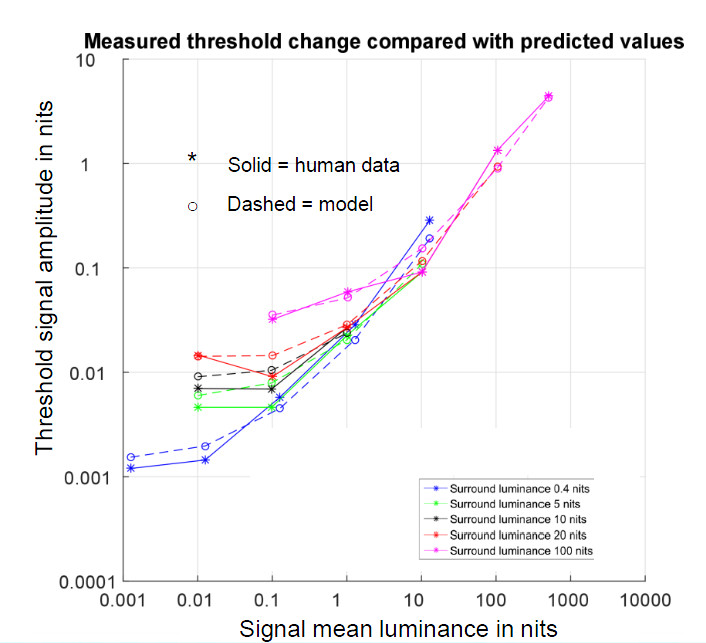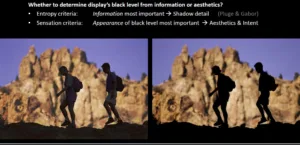Dolby Labs and contributors at EPFL reported at the HPA Retreat on a new study they recently undertook. The goal was to understand how the perception of black level was affected by the eye’s adaption (function of the on-screen content and other room light sources), screen reflections (from room light sources) and glare (reflections from room elements other than the screen).
For the experiment, Dolby used their Pulsar monitor with an additional neutral density filter added to bring the black level down to 0.0005 cd/m². The surround was a white wall illuminated uniformly at several levels varying from 0.4 to 100 cd/m². The observer did not see any direct light sources and none were reflected by the screen.
The test signal was a small sine wave in a circular pattern (Gabor stimulus) whose average luminance level was also varied (from 0.01 cd/m² to 100 cd/m²). This was placed on one side of the display and the observer was asked to identify which side (left or right) contained the pattern.
25 observers were tested. As expected, for very dark surrounds, the pattern could be detected correctly at low pattern luminance levels, which increased as the room ambient increased. A model for this behavior was also developed and compared to the measured results, as shown in the chart.

The team’s conclusions were:
- Black level visibility lower for Gabors than edge-based stimuli (discs, patches, pluge)
- Increasing surround luminance raises all thresholds, but raises black level thresholds more
- Black level detail as low as 0.001 cd/m² can be seen in dark surround with 35º FOV display
- Black level < 0.1 cd/m² visible for 5 cd/m² surround
- For 35º FOV (3H)
- Expected to be lower for larger FOV (e.g., 1.5H for UHD resolution or cinema)
- Model based on Rogers and Carol surround data predicted the essential results
- Important not to confuse black level visibility with preference of aesthetic appearance of black (which may be even lower)
Daly then posed an interesting question. Is it better to provide the maximum amount of information in a scene by adjusting Pluge patterns to show all the shadow detail (the entropy argument), or is it better to go for an artistic or aesthetic look where the appearance of black is more important (the sensation argument)? This was really a rhetorical question, however. – CC

